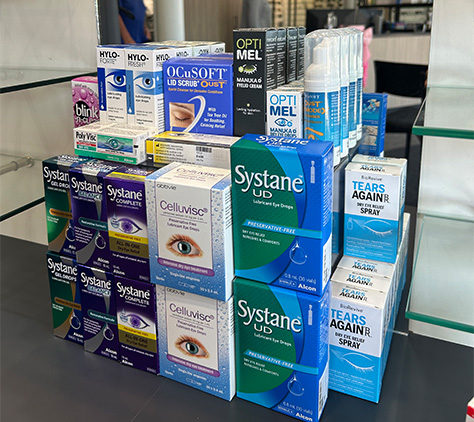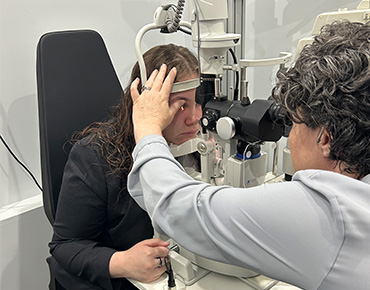

Treatment and causes of dry eyes
Our Optometrists Janine and Catherine, have developed techniques to diagnose, treat and sometimes even cure dry eye symptoms. They use a combination of drops, IPL (Intense Pulse Light Therapy) and prescribed medication to tailor treatment for the individual.
What causes dry eyes?

Decreased tear production from aging or an underlying condition like diabetes or thyroid disorders

Increased evaporation of tears when the glands producing the oily layer of the tears are not functioning properly

Environmental factors like wind and low humidity

Airconditioning and heating may exacerbate the dryness

Long periods on a computer may make the dryness worse

A viral infection or some medical conditions

A side effect of some medications

It can be part of the natural ageing process
If you're experiencing dry eyes we can help. Early treatment is important to prevent long term problems.
FAQs
Will I always need to use drops for my dry eyes?
Initial treatment will usually start with drops and creams. Consulting with our Optometrists is essential to determine the cause of your dry eyes and create a personalized treatment plan that may include, but is not limited to, eye drops. Many people can find relief with other options like lifestyle changes, improved eyelid hygiene, and targeted treatments that address the underlying cause of dryness. While artificial tears are a common and effective first step for mild dry eye, exploring alternative therapies is crucial for persistent or severe symptoms to achieve longer-term relief and manage the condition effectively.
What drops are best for dry eyes?
This will depend on the cause of the dryness. Once a diagnosis of the type and cause of your dry eyes has been established then a recommendation can be made. Artificial tears have a variety of ingredients to manage the various forms of dry eye. Lubricants, Low Osmolarity drops, Lipids, Hyaluronic acid, and gels are all used in some situations. Our optometrist can examine your eyes and then recommend the drops that will treat your eyes effectively.

What are the latest treatments for dry eye?
Our Optometrists are always looking at the latest research on new treatments for dry eyes. Some recent developments have included the use of cyclosporine eye drops and autologous serum. Once a proper assessment of your eyes has been made our Optometrists will select the best treatment for you.

Use of IPL (Intense Pulse Light) in dry eye
In some cases, we may recommend the use of IPL to warm and unblock the Meibomian glands. These glands are responsible for producing oil that is responsible for maintaining normal tear function. This is a simple and quick procedure which restores the quality of the tears and provides a long-lasting improvement. The treatment usually consists of 4 treatments 2 weeks apart and included in the treatment is a massaging of the glands to open the ducts. Some people will notice a response after one treatment, but longer-term results will need a full course of four treatments. The IPL reduces the number of artificial tears required by stimulating the oily component in your tears.
Use of prescribed medications for dry eye
Janine and Catherine, our Optometrists will often use some prescribed medications to get the dry eye to improve when the inflammation is severe and the eyes very dry. Once the eyes have been examined by our Optometrists, they will provide a plan for recovery and treatment. This may involve anti-inflammatory drugs and antibiotics in some cases. These supplement the regular dry eye treatments like artificial tears and IPL (Intense Pulse Light Therapy).




 Buy Contact Lenses
Buy Contact Lenses Book an Appointment
Book an Appointment